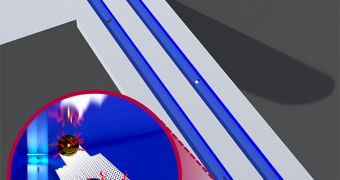A group of engineers at the Massachusetts Institute of Technology (MIT), in Cambridge, announces the development of a new measuring technique, which allows them to weigh the mass of particles with extreme precision, at a resolution of one millionth of a trillionth of a gram, or an attogram.
The approach can be applied to both synthetic nanoparticles and biological cellular components, the team says. By learning more about the weight of these particles, researchers could potentially discover a treasure trove of new data related to both their composition and function.
This is of great use in the field of medicine, for example, where artificial nanoparticles are being used to deliver chemotherapy drugs to treat cancer, or to address a series of other diseases. Characterizing the weight and chemical composition of these particles will enable treatments that are better targeted, and which therefore yield fewer side-effects.
MIT professor of biological and mechanical engineering Scott Manalis was the one who developed the technology used as a precursor for the new method. His device, called the suspended microchannel resonator (SMR), could only be used to weigh larger small-scale structures, such as cells.
The resonator works by determining the mass of particles while they flow through a very narrow channel in the device. The new instrument developed at MIT refines this approach, by miniaturizing it even further, and making it more sensitive to extremely small particles.
In terms of technical specifications, the resolution of the SMR has been improved 30 times over, and is now as low as 0.85 attograms, the group reports. Details of the device appear in the latest early online issue of the esteemed journal Proceedings of the National Academy of Sciences (PNAS).
“Now we can weigh small viruses, extracellular vesicles, and most of the engineered nanoparticles that are being used for nanomedicine,” explains MIT postdoctoral researcher Selim Olcum, one of the co-lead authors of the paper.
“We’re particularly excited about using the high precision of the SNR to quantify microvesicles in the blood of GBM [glioblastoma] patients,” says Manalis. Glioblastoma is the most aggressive and common form of brain cancer, featuring extremely low survival rates following diagnostics.
“Although affinity-based approaches do exist for isolating subsets of microvesicles, the SNR could potentially provide a label-free means of enumerating microvesicles that is independent of their surface expression,” Manalis concludes.

 14 DAY TRIAL //
14 DAY TRIAL //